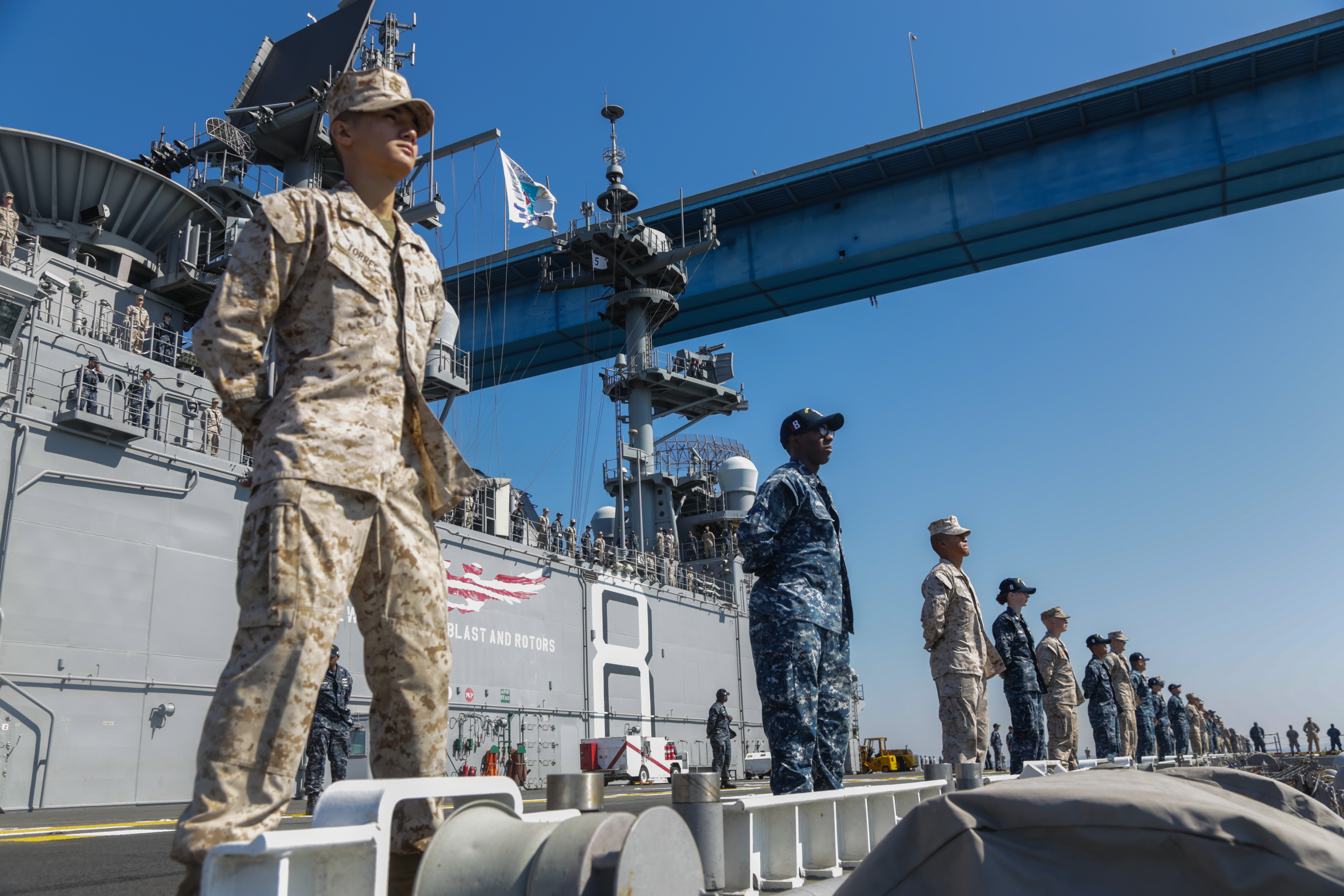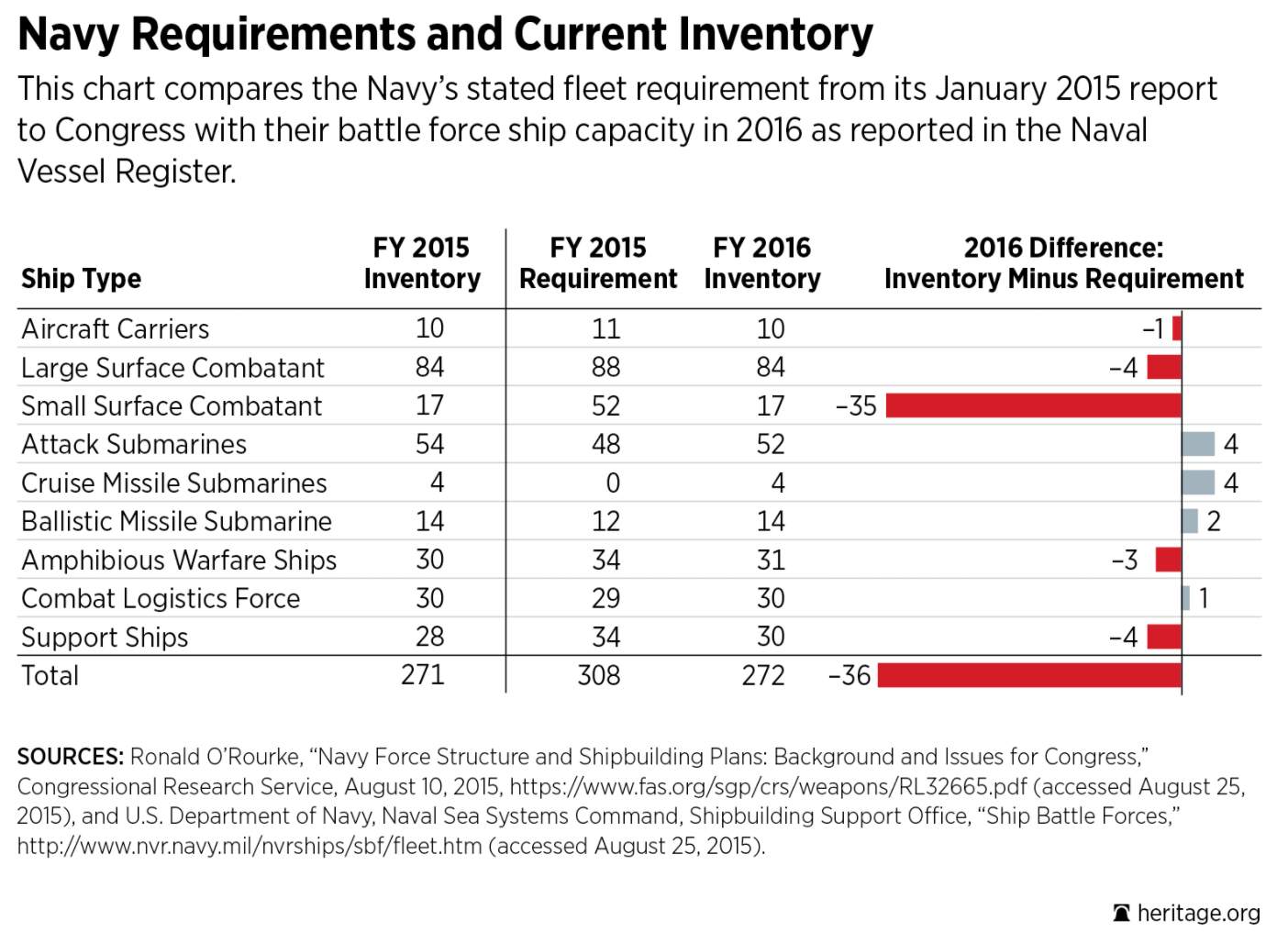
Moscow is a “formidable” potential adversary while the U.S. Navy and Marine Corps as “marginal” in meeting today’s requirements, according to a new report from the Heritage Foundation released on Wednesday.
Specifically, in Heritage’s 2017 Index of Military Strength, the Navy was ranked “marginal” in its ability to meet operational requirements, “strong” in readiness and “weak” in capability due to by aging platforms and troubled modernization programs and “marginal” in being able to meet operational requirements.
The report rated the Marine Corps as “marginal” because of its continued high operating tempo and low funding.
“As was the case in preceding years, the Index assess that the Corps has only two-thirds of the combat units that it actually needs, especially when accounting for expanded requirements” including cyber and crisis response forces,” read the report.
While modernization programs “were generally in good shape” aviation from platforms to pilot proficiency were below its ranking standards to meet operational requirements.
While the Air Force, like the Navy and Marine Corps were rated as ”marginal”, the Army was rated “weak” because of declining end strength, possibly soon down to 420,000 soldiers and no major modernization programs under way.
Now in its third year, Dakota Wood, the index’s editor, said to have the sea services ready, capable and with the capacity to fight two wars at the same time the Navy would have to have a fleet of 346 ships and 624 strike aircraft and the Marine Corps would need to have 36 battalions.
The Navy now has about 272 ships with a construction program plan to grow to 308. The Marine Corps now has 23 battalions.
Complicating matters for the Navy, Wood said is its requirement to provide forward presence, conduct freedom of navigation operations and remain on maritime patrol in addition to projecting combat power.
Wood said the Index “is not a futures document” as to what the nation should be doing in terms of national security and defense. “It is a snapshot” of the active-duty force that “only looked at hard combat power” not the support elements of transportation, logistics, etc.
The idea was to also make the Index “more than a scorecard,” so there are accompanying essays and graphics to expand on points, he said.
 “Bad actors behave in bad ways.” Wood specifically noted Russia’s aggressive behavior from the Baltics to the Black Sea and its “formidable” capability, China’s militarization of artificial islands in the Pacific, North Korea’s continued testing of nuclear weapons and Iran’s “gathering” capability in its ballistic missile programs and the growing threats to the United States, its allies and partners from terrorist groups operating not only in the Middle East but in Africa and Asia.
“Bad actors behave in bad ways.” Wood specifically noted Russia’s aggressive behavior from the Baltics to the Black Sea and its “formidable” capability, China’s militarization of artificial islands in the Pacific, North Korea’s continued testing of nuclear weapons and Iran’s “gathering” capability in its ballistic missile programs and the growing threats to the United States, its allies and partners from terrorist groups operating not only in the Middle East but in Africa and Asia.
For deterrence, “we fully endorse the two-war construct,” but using the Index’s metrics, “the United States military is essentially a one-war force.”
As the launch of the report, Rep. Michael Turner, (R-Ohio), and chairman of the House Armed Services Tactical Air and Land Subcommittee, told the Heritage audience, “The facts are the facts when it comes to Russian aggression.”
The index notes, “Russia seeks to maximize its strategic position in the world at the expense of the United States” with “every tool at its disposal.”
While differing from President-elect Donald Trump on how great a threat Moscow poses in Europe, Turner said it was time for a new approach in the relationship with Moscow.
As the chairman of the United States’ delegation to the NATO Parliamentary Assembly, he said, “Others need to step up” to meet their obligation to treaty obligation to spend two percent of their gross domestic product on defense and security. Only five of NATO’s 28 members meet that threshold.
“We need to prod, coerce [them] to do more of their own behalf,” Wood said in his remarks.
Turner also warned if sequestration remains in place under the Budget Control Act it “will prevent further growth In the Army and Marine Corps, delay production of the F-35 while Russia and China are developing fifth-generation fighters and eventually lose the intelligence, surveillance and reconnaissance capabilities of the U-2 and Global Hawk unmanned aerial system.
“Both presidential candidates called for an end to sequestration for defense,” he said. He called offsetting increased spending on defense with higher domestic spending “a false choice. …We have to do this [roll back the Budget Control Act” and increase defense spending.
In his remarks on the index, Wood added, “We are a global power” and “we should be spending commensurate” with that status.





